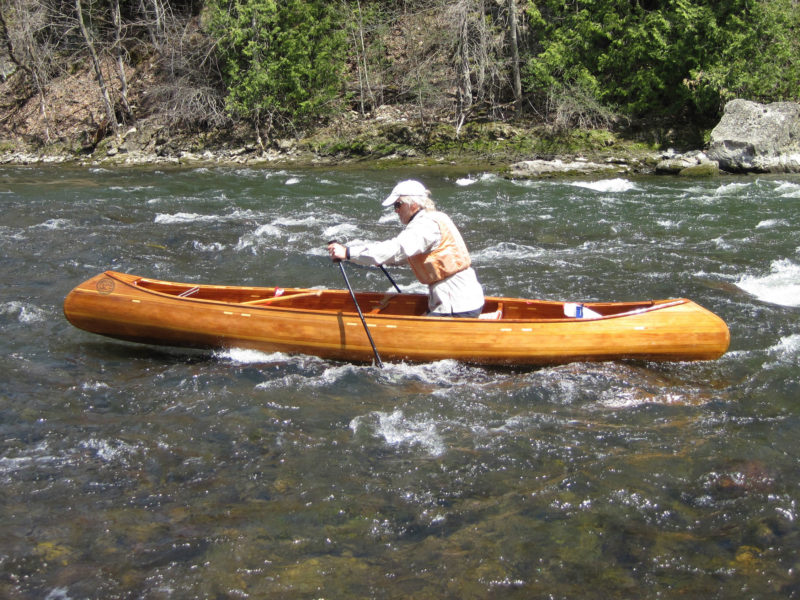 Viveka Fox
Viveka FoxStout ski poles offer a way to move upstream in the shallows while kneeling rather than standing in a canoe.
Poling is the age-old technique for propelling a canoe against rapids or up shallow streams where paddling is ineffective. Standing in the canoe, the paddler uses a straight pole, often 12′ long, to push against the streambed; a skillful poler can make this look graceful and effortless.
Preparing for a 2013 through-paddle of the Northern Forest Canoe Trail (NFCT) in a 14′ solo canoe, I was in the midst of making a two-piece pole when I accepted that standing in a small, narrow canoe in rapids was probably a recipe for disaster. I adopted instead to adopt a technique suggested by my wife the previous summer. Progressing up an Adirondack stream too shallow to plant a paddle blade in and with no long poles on hand, she suggested using a pair of sticks in double-poling fashion like cross-country skiers do. It worked astonishingly well, and immediately entered my repertoire of skills.
The poles I now carry are aluminum downhill ski poles. It is critical that the poles be stiff and strong. Wide flanges on the grips ease the need to clench hands so tightly. Removing the baskets makes them less susceptible to snagging rocks, albeit offering less resistance against a riverbed of soft silt, and removing the wrist straps allows quick release if they become wedged between rocks and when it’s time to resume paddling.
Double-poling can require considerable upper-body strength, and much of the propulsion comes from bending the torso rather than relying on arms alone. Kneeling in the canoe with the knees set especially wide offers better control of heeling and steering. It is worth trimming the canoe to be bow light so that, on entering the current, there is less risk of it being swept around.
For effective forward propulsion, the poles have to be angled well backward, tips planted roughly even with the hips. Steering is achieved by planting a pole forward of the hip and pointing away from the canoe while the other pole, planted well back, prevents downstream drift or, strength permitting, maintains forward momentum. I have yet to try tandem double-poling, but it promises to be highly effective, especially with the stern poler providing propulsion, while the bow poler steers by guiding the bow as necessary.
Double-poling has some advantages: the poles are lighter and easier to stow, and the kneeling position gives you a lower center of gravity and greater stability. It also has some disadvantages: less leverage and less propulsion than a long pole, and a smaller range of water depths in which it is feasible.
Poles sometimes wedge between rocks, so I recommend practicing this technique before relying on it for real. On the NFCT, double-poling propelled me in a fully laden canoe up Class I and lower Class II rapids on New Hampshire’s Upper Ammonoosuc and Androscoggin rivers and Maine’s Spencer, Little Spencer, and Caucomgomoc streams.![]()
Following a career of teaching high school science in the U.K., Peter Macfarlane immigrated to Vermont to take up life as a musician. Playing and teaching the fiddle professionally has afforded him the time to indulge his passion for cedar-strip canoes, not only paddling them but also designing and building them as Otter Creek Smallcraft. The canoe pictured here is a Sylva, a solo touring canoe he designed, built, and paddled the 740-mile length of the Northern Forest Canoe Trail through northern New York, Vermont, Quebec, New Hampshire, and Maine.
You can share your tricks of the trade with other Small Boats Monthly readers by sending us an email.
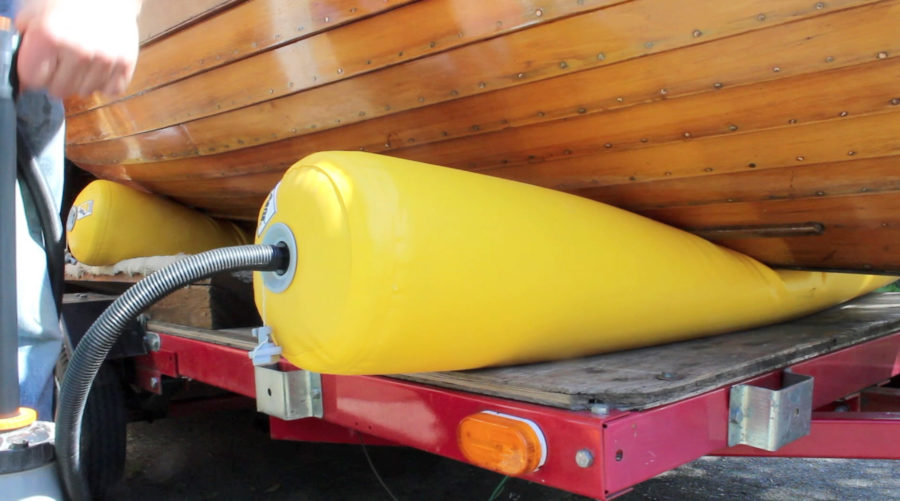
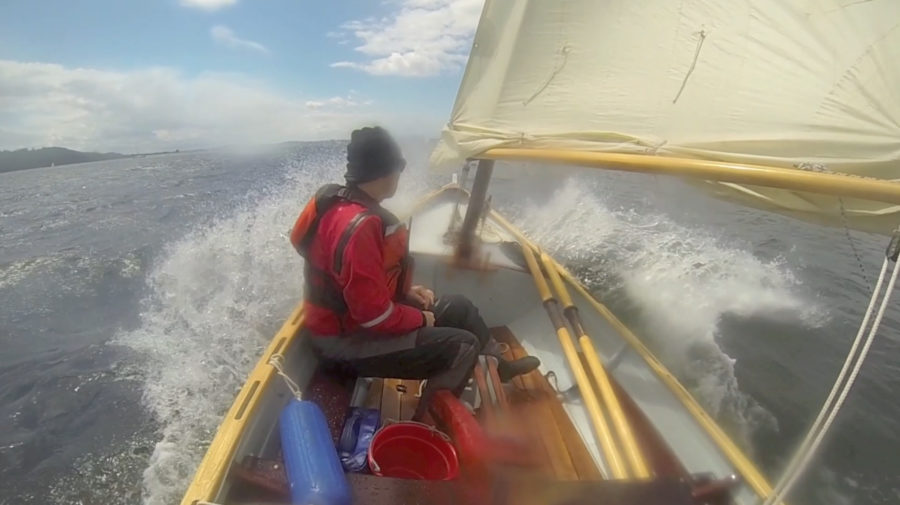
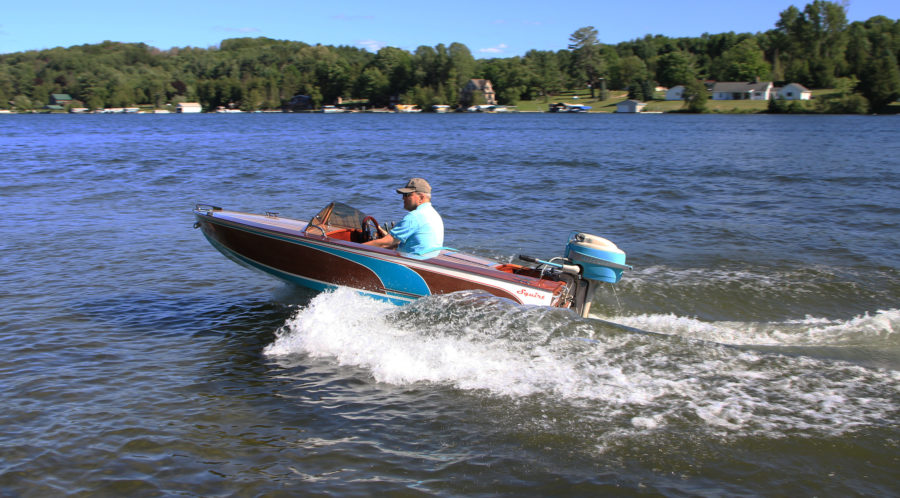
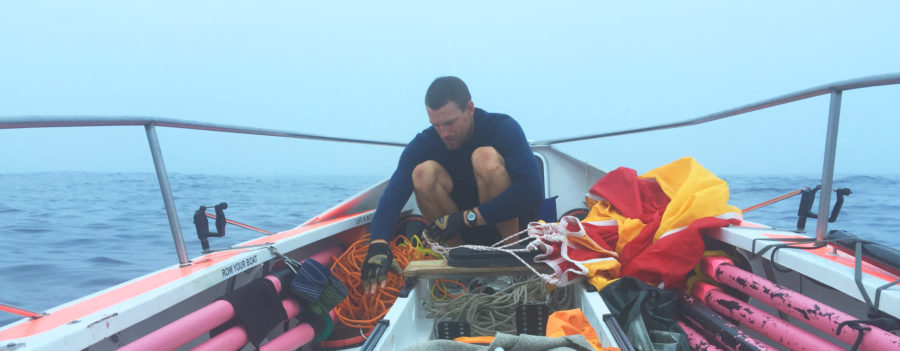

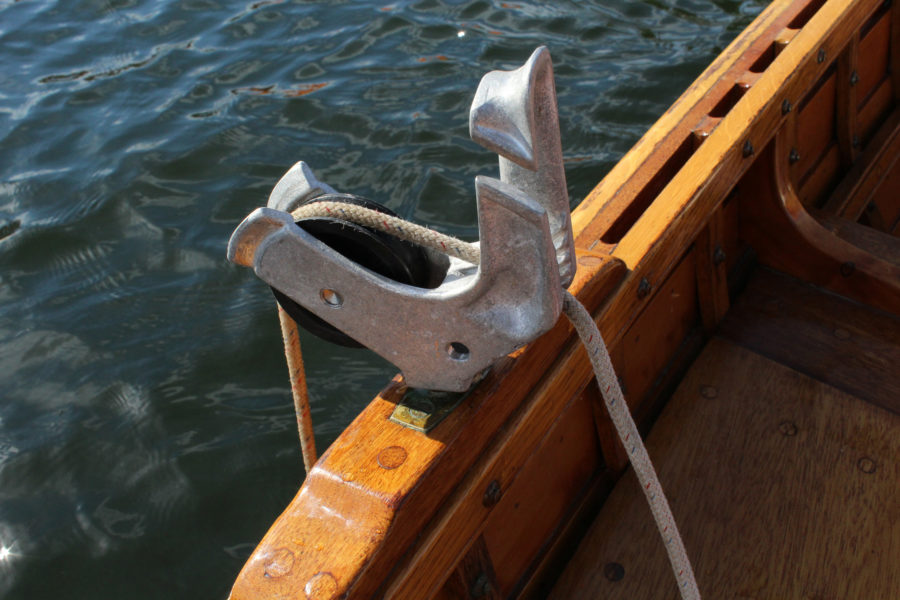
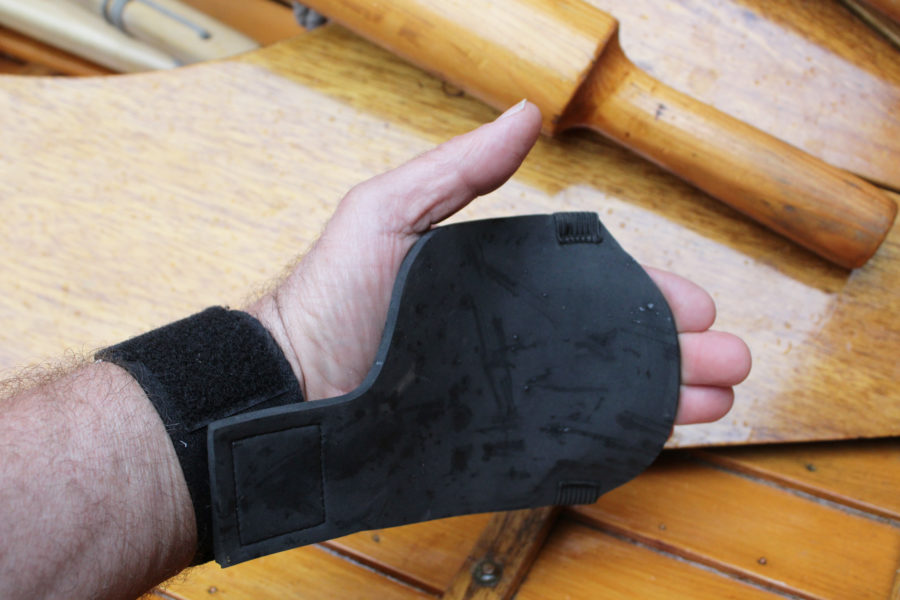

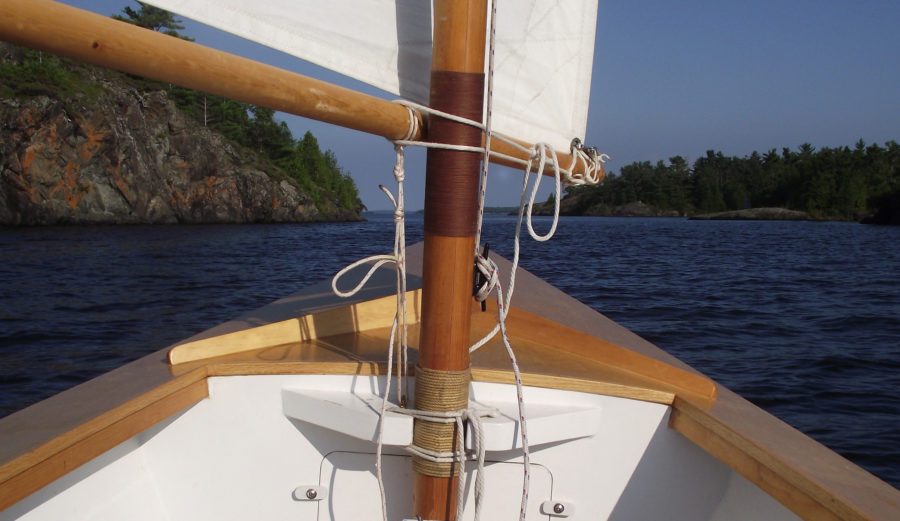
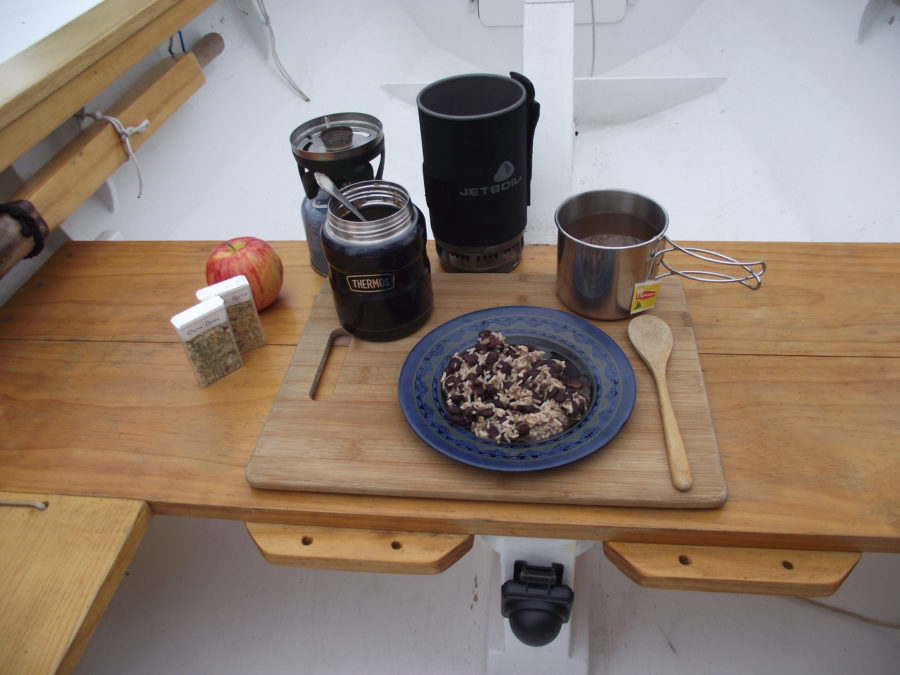
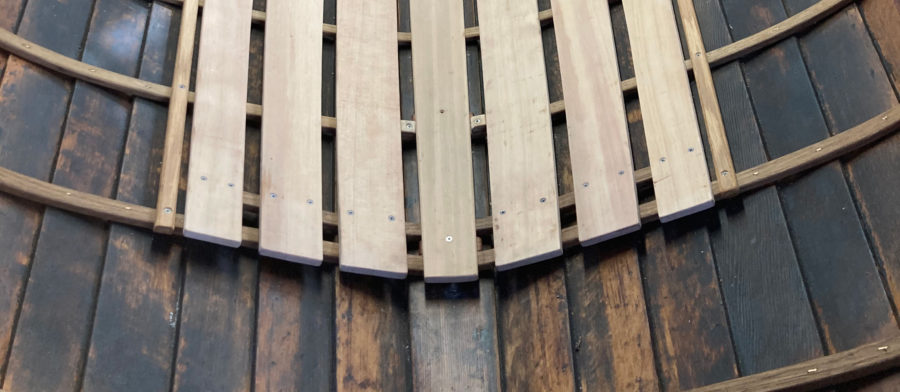
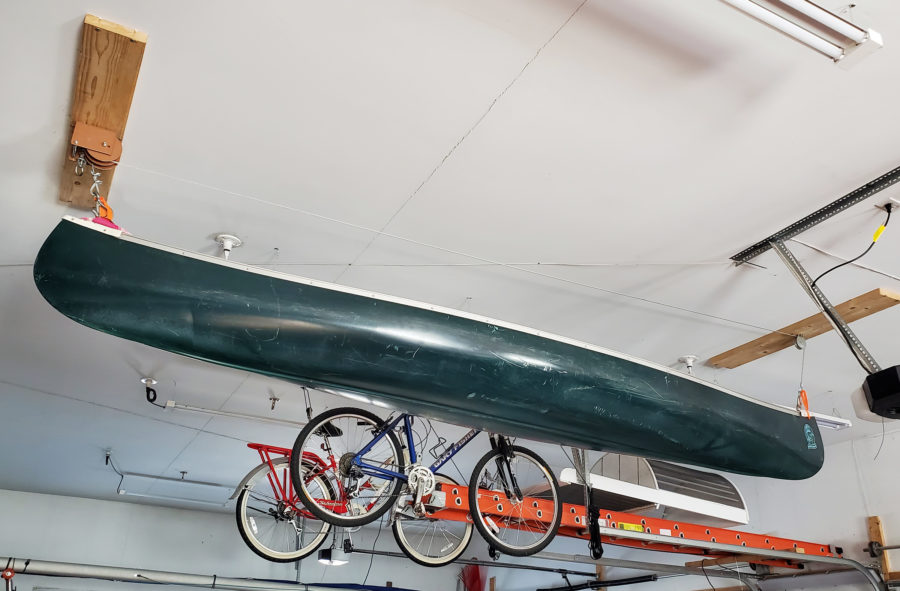
This could benefit from studying the cross-country skier’s double-poling technique, which favors use of the abdominal muscles in doing most of the work, rather than the arms, which will tire very quickly.
Kudos to Peter on his inventive and effective technique. Having used traditional poling along the Northern Forest Canoe Trail, and across Maine (both successfully and not so). I appreciate your ingenuity. In my experience, a slight change in approach particularly at the end of a long day, can make all the difference. Wish I had thought of this myself!